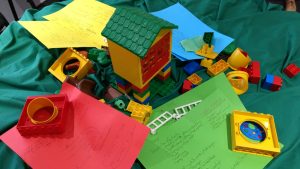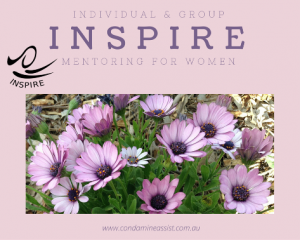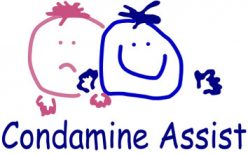Goals, resolutions, targets, dreams, visions….. Some of us love them. Some of us hate them. It’s understandable that you might be sceptical about them. Sometimes we set plans with good intentions and end up disappointed. Life happens in all its chaotic glory and sends our plans awry, we lose sight of our intended destination and lose hope, or we become despondent with ourselves, others or the world around us. Maybe we even forget what our goal was, or our priorities change and we let it go. Perhaps we achieve our goal but the reward at the end just isn’t there, as if the goal post has been shifted, or we’ve been deceived about the expected benefits. We can doubt our capacity to achieve what we set out to. In order to protect ourselves from further hurt and wasted energy we swear never to set New Year’s Resolutions again because they just don’t work. Sound familiar?
How I love goals! Let me count the ways!
I love goals. I have daily lists to help me stay focused and efficient. I also have weekly, monthly, 3 month, 12 month and 3 year work goals. I’m flexible with them, and at the same 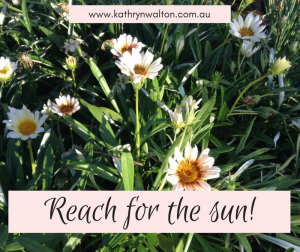 time I respect them. I teach many individuals and groups how to use goals to enhance their mental health and wellness, and I see amazing progress when they are used effectively. I also use goals in my personal life. I love the sense of satisfaction, self-worth and achievement that comes with goals. Goals also nurture inner skills such as persistence, patience, organisation, and problem-solving which can be applied to all sorts of other situations in life, and can have a therapeutic effect on your mind.
time I respect them. I teach many individuals and groups how to use goals to enhance their mental health and wellness, and I see amazing progress when they are used effectively. I also use goals in my personal life. I love the sense of satisfaction, self-worth and achievement that comes with goals. Goals also nurture inner skills such as persistence, patience, organisation, and problem-solving which can be applied to all sorts of other situations in life, and can have a therapeutic effect on your mind.
Goal-setting is a learned skill
Effective goal-setting is a learned skill. Once you have it, the sky’s the limit! But the down-side is that if you experience a sense of failure with your goal, and if you don’t adjust your sails and use creative problem-solving, it can put you off for life. Remember to practise, persist, and problem-solve just as you would with any other skill!
9 steps to achieve your goal successfully
Step 1 – Identify an area for change
Identify one area in your life where you’d like to see some change. Select something you have some control over that centres around yourself. Focusing on things outside your control sets you up for failure. Where would you like to see a change?
Step 2 – Stay focused on the change, don’t be distracted by problematic thoughts
You might notice your thoughts jumping straight away to all the problems, barriers, obstacles and impossibilities associated with your desired change. For now, acknowledge your brain is doing its job of trying to protect you from failure, and try to let go of those thoughts. We’ll be coming back to them so stay focused on your desired change for now.
Step 3 – Select your SMART goal
SMART is an acronym to help you remember the key elements that can make or break your goal.
- S – Specific Know exactly what your goal is. Take the area you selected in Step 1 and narrow your goal down as much as possible. Keep it simple, clear, concise and specific. Vague, general statements about your goals are not helpful – they lack direction.
- M – Measurable How will you know when you’ve achieved your goal? If you’ve left your goal as a vague statement (eg “Get fit”) how will you know when you’ve achieved it? Being specific will help you to measure it (eg “Swim non-stop for 15 minutes”).
- A – Attainable Set yourself up for success! What are your expectations? Is your goal achievable?
- R – Realistic Are you being realistic with your goal? Do you have access to the resources and supports you’ll need? Do you have the energy to put into it?
- T – Time frame Set a time frame to achieve your goal. Deadlines help us stay focused. Be flexibile though so that you can make adjustments if your goal takes longer than expected.
Step 4 – Write it down!
This is a really powerful action to take! Writing it down makes it more real, more tangible. Share it with others if you like, or come back and look at it yourself as a daily reminder to keep you actions in flow with your goal. It’s your personal marketing plan designed to keep you coming back again and again to what’s important to you.
Step 5 – Know your WHY! Commitment not motivation!
Motivation is a very temporary and fickle thing. It can’t be relied on. Commitment is what will keep you working on your goal whether you feel motivated or not! Why is your goal important to you? For your overall health? To keep up with your kids / grandkids? To have more financial freedom? Something else? Write your WHY down next to your SMART GOAL. It will keep your compass pointed in the right direction.
Step 6 – Break it down
Write down 5-10 steps (in order) you’ll need to take to achieve your goal. If your goal is to swim non-stop for 15 minutes, the steps might include:
- buy suitable swimming attire
- find out about pool membership / entry fees
- go to swimming squad once a week to improve technique and fitness
- ask a friend to be a swimming buddy
- swim at least 3 times a week
- swim 1 lap non-stop
- swim 5 minutes non-stop
- swim 10 minutes non-stop
- swim 15 minutes non-stop.
Step 7 – Step into your goal
Take each step one at a time.
Step 8 – Creatively problem-solve issues that arise
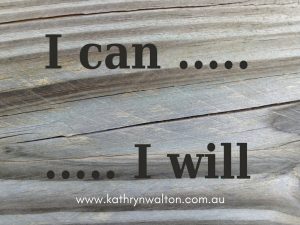 Remember all those problems your mind started to thinking about in Step 2? Problem-solving is where the power is (another blog later this month will look at this in more detail). Persistence makes all the difference between giving up on your goal (and yourself) and being unstoppable. Some of the problems will be predictable and you’ll be able to plan for them. Others less so.
Remember all those problems your mind started to thinking about in Step 2? Problem-solving is where the power is (another blog later this month will look at this in more detail). Persistence makes all the difference between giving up on your goal (and yourself) and being unstoppable. Some of the problems will be predictable and you’ll be able to plan for them. Others less so.
Step 9 – Reward yourself!
What will be your reward when you’ve accomplished your plan? Will it be an inner sense of satisfaction? The simple pleasure of knowing you’ve done what you set out to do? Improved energy or a sense of wellness? Or will it be an external reward like buying yourself a new set of flippers? Or perhaps entering a race? A word of caution here to make sure your reward aligns well with your goal and that you don’t self-sabotage your efforts.
More on goals, obstacles and problem-solving soon!
You might have guessed by now that this month’s theme is all about GOALS! Over the coming weeks I’ll be sharing with you one of my own personal goals using the 9 steps listed above. I’ll be delving into the barriers I’ve identified to achieving my goal, and I’ll share with you the not-so-secret secrets to creative problem-solving so that we can get ourselves unstuck when things get tricky.
Discovering mountain biking as life’s ultimate parallel universe in her middle age,  Kathryn Walton shares information and reflections in Daisy Spoke that connect, inspire and self-empower women to make healthy choices for themselves. She integrates her love of physical exercise, family, nature, gardening and creative arts with her professional background in mental health social work to facilitate change with individuals, groups and communities of women who are committed to living life to the full.
Kathryn Walton shares information and reflections in Daisy Spoke that connect, inspire and self-empower women to make healthy choices for themselves. She integrates her love of physical exercise, family, nature, gardening and creative arts with her professional background in mental health social work to facilitate change with individuals, groups and communities of women who are committed to living life to the full.
Have you signed up yet?
 In the meantime, if you haven’t already signed up for Grounded Inspiration, now’s a great time to do that. Never miss out on the latest news, inspiration or blog posts! And be the first to hear about my new releases throughout the year as I develop and publish programs to enhance women’s wellness and professional knowledge. Sign up here!
In the meantime, if you haven’t already signed up for Grounded Inspiration, now’s a great time to do that. Never miss out on the latest news, inspiration or blog posts! And be the first to hear about my new releases throughout the year as I develop and publish programs to enhance women’s wellness and professional knowledge. Sign up here!

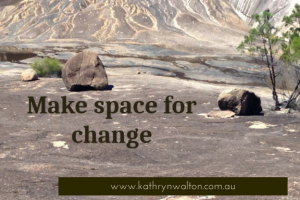
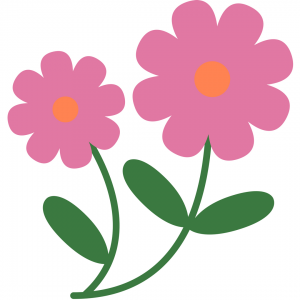 make the best ‘recipe’ for resilience and happiness – our world is full of distractions and quick-fix ideas. So, here I’d like to offer you some of the action-based ingredients that stand out through the ages and in all parts of world, and that are now backed up by rigorous research. In the next blog I’ll outline some of the very powerful mind-based strategies you can add to your mix to really step into your strength.
make the best ‘recipe’ for resilience and happiness – our world is full of distractions and quick-fix ideas. So, here I’d like to offer you some of the action-based ingredients that stand out through the ages and in all parts of world, and that are now backed up by rigorous research. In the next blog I’ll outline some of the very powerful mind-based strategies you can add to your mix to really step into your strength.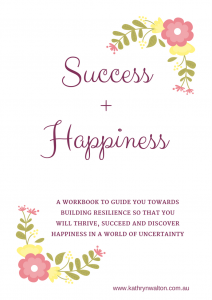 I have an EXCITING OFFER for you!
I have an EXCITING OFFER for you!
 So, what are these foundation stones of wellness? There are four main foundation stones that I work on with my clients as well as in my own personal life. Each of the stones support each other – they are interlinked – and they are a fabulous place to start building or renovating wellness at any time! The foundations are based on solid evidence that is routinely used in the mental health sector.
So, what are these foundation stones of wellness? There are four main foundation stones that I work on with my clients as well as in my own personal life. Each of the stones support each other – they are interlinked – and they are a fabulous place to start building or renovating wellness at any time! The foundations are based on solid evidence that is routinely used in the mental health sector. Basically, people are designed to move … a lot. When we don’t move enough, we are at greater risk of switching into a depressed or anxious state. It’s simple biology. Get moving, get active, get off the sofa, and move as much as you can and often as you can. For most of us it’s recommended to aim for about an hour of moderate intensity exercise or activity each day, and limit our screen time to 2 hours per day. The combined mental and physical health benefits of exercise / activity cannot be replaced by any medication. If you are in pain, or have limited movement, injuries, or chronic disease, the best idea is to do what you can. Remember always check with your doctor or health professional if you have any concerns about your health, exercise, and resting needs.
Basically, people are designed to move … a lot. When we don’t move enough, we are at greater risk of switching into a depressed or anxious state. It’s simple biology. Get moving, get active, get off the sofa, and move as much as you can and often as you can. For most of us it’s recommended to aim for about an hour of moderate intensity exercise or activity each day, and limit our screen time to 2 hours per day. The combined mental and physical health benefits of exercise / activity cannot be replaced by any medication. If you are in pain, or have limited movement, injuries, or chronic disease, the best idea is to do what you can. Remember always check with your doctor or health professional if you have any concerns about your health, exercise, and resting needs. 2. Sleep
2. Sleep 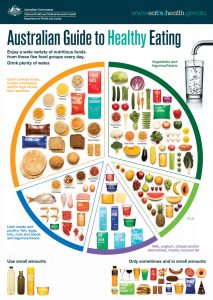 3. Nutrition
3. Nutrition  4. Mind
4. Mind